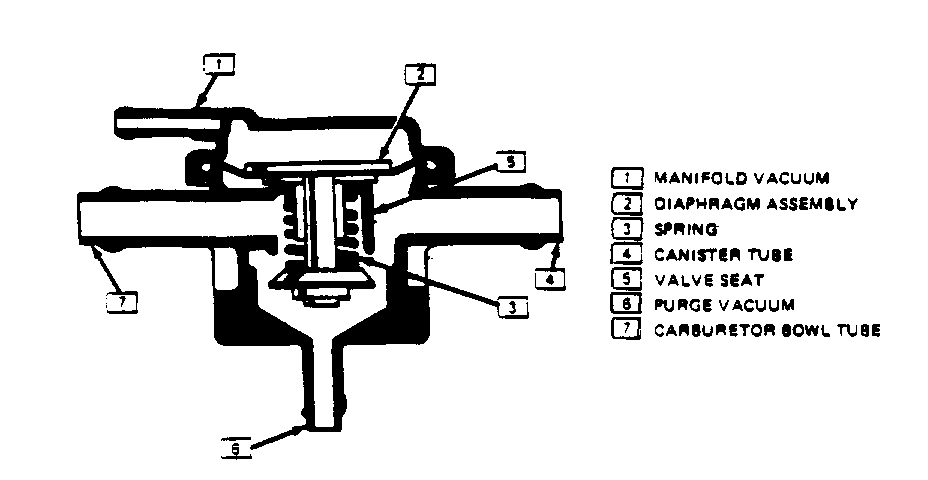REVISED TESTING PROCEDURE CANISTER CONTROL VALVE

VEHICLES AFFECTED: All 1982-1984 Vehicies Equipped With 3.0L (Code E), 3.8L (Code A), 4.1L (Code 4), 5.0L (Code Y) or 3.8L Turbo (Codes.9, 8, 3) Engines
Should a vehicle be received with comments of low fuel mileage, poor performance or a service engine soon light on with Code 45, the canister purge valve should be checked per the procedures provided in this bulletinn.
When diagnosing a condition such as rough idle, rich acceleration, or lean idle duty cycles (high, dwell readings indicates an over rich condition), the following procedure should be followed for diagnosis of the canister control valve:
1. Apply a short length of 3/8 inch (9.5 mm) I.D. hose to the valve's carburetor bowl tube on the Canister control valve (No. 7 in figure) and blow very lightly into it. Air should pass out through both the canister tube and purge valve tube (No. 4 and No. 6 in figure). If it does not, replace the canister control valve.
2. Use a hand vacuum pump to apply vacuum (15 inch Hg or 51 kPa) to the manifold vacuum tube (No. 1 in figure). The diaphragm should hold vacuum for at least 20 seconds. If it does not, replace the canister control valve.
3. With vacuum still applied to the manifold vacuum tube (No. 1 in figure), again try blowing lightly through the hose into the carburetor bowl tube (No. 7 in figure). No air should flow from the canister tube or purge vacuum tube (No. 4 and No. 6 in figure). If air does pass through either tube (No. 4 and No. 6 in figure), the valve assembly is not sealing properly, and the canister control valve must be replaced.

General Motors bulletins are intended for use by professional technicians, not a "do-it-yourselfer". They are written to inform those technicians of conditions that may occur on some vehicles, or to provide information that could assist in the proper service of a vehicle. Properly trained technicians have the equipment, tools, safety instructions and know-how to do a job properly and safely. If a condition is described, do not assume that the bulletin applies to your vehicle, or that your vehicle will have that condition. See a General Motors dealer servicing your brand of General Motors vehicle for information on whether your vehicle may benefit from the information.
